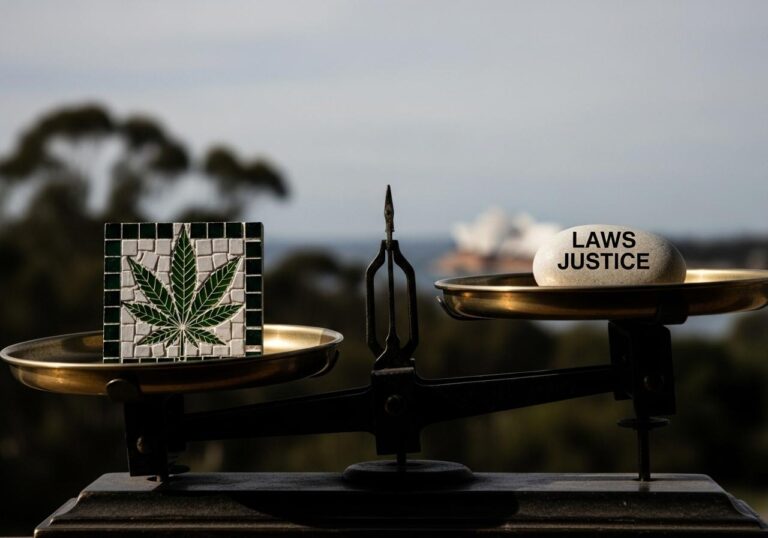Contents
- 1 Recreational Cannabis in Australia: What’s Legal, What’s Not
- 2 Introduction to Recreational Cannabis in Australia
- 3 Legal Status of Recreational Cannabis
- 4 Medical Cannabis Versus Recreational Use
- 5 Cannabis Decriminalization and Legalization Efforts
- 6 Public Health and Safety Concerns
- 7 Illegal Market and Its Implications
- 8 The Future of Recreational Cannabis Legislation
- 9 Conclusion
Recreational Cannabis in Australia: What’s Legal, What’s Not
Cannabis in Australia is as complex as a game of two-up on Anzac Day. You’d think it’s straightforward: flip a coin, heads or tails. But, when it comes to cannabis, it’s more of a mix of state laws, federal guidelines, and a touch of “who’s asking?” The land of the kangaroo and Vegemite has its own unique take on this versatile plant, from its historical roots to its possible future in the national conversation.
Introduction to Recreational Cannabis in Australia
Cannabis use in Australia has evolved over the years, swinging like a pendulum between prohibition and cautious acceptance. Historically, those caught lighting up were often met with a judicial frown and the occasional wagging finger of moral disapproval. Public opinion, however, has mellowed like a fine Shiraz, with a considerable number of Aussies now fancying the idea of legalized recreational use. Why the shift? Maybe it’s the allure of increased tax revenue, or perhaps it’s just a nod to personal freedom and autonomy. Who knows? What’s certain is that the debate continues to roll like waves on Bondi Beach.
Legal Status of Recreational Cannabis
So, what does the law of the land say? At the federal level, the Narcotic Drugs Act doesn’t leave much room for recreational adventures with cannabis. It’s still largely classified as an illicit drug. But, the story takes a twist as you move between states and territories. In the Australian Capital Territory, for instance, adults are allowed to possess up to 50 grams for personal use. Meanwhile, in places like Western Australia and South Australia, the penalties for possession can range from fines to more severe consequences like imprisonment. It’s almost like each state is its own little cannabis kingdom with distinct laws of the land.
Medical Cannabis Versus Recreational Use
Enter medical cannabis, the hero in white coats and lab glasses. Under the strict eye of the Therapeutic Goods Administration, medical cannabis products are available for those with a prescription. The framework for medicinal cannabis is robust, aiming to provide relief where traditional medicines sometimes fail. But don’t let the science fool you into thinking it’s a free-for-all. The distinction between medical and recreational cannabis is crucial. It’s like comparing a strict matronly figure to a carefree surfer dude – both have their place, but their philosophies don’t always align.
Cannabis Decriminalization and Legalization Efforts
The winds of change are blowing, carrying with them whispers of decriminalization and reform. Recent legal reforms are peeling back layers of prohibition, like an onion one tearful layer at a time. Advocacy groups and political parties are increasingly voicing support for reform, often citing examples from abroad. The Green Party and some community groups are leading the charge, arguing that decriminalization could help curb the illegal market and protect users. The push for change is palpable, but whether it will result in significant legislation or referenda is anyone’s guess.
Public Health and Safety Concerns
With all the excitement, it’s easy to overlook the potential health implications of cannabis use. While some users experience a buzz akin to a sunny day at the beach, others may face challenges like dependence or even psychosis. Then there’s the matter of road safety. Drug-impaired driving laws are evolving, aiming to prevent a potential traffic jam of cannabis-related incidents. Strategies for reducing harm include education campaigns and promoting safe use, reminding everyone that moderation, like sunscreen on a hot day, is key.
Illegal Market and Its Implications
Despite these efforts, the illegal cannabis market continues to thrive, offering a tempting alternative to those willing to bypass the law. This shadowy side of cannabis can influence the legal framework, often pushing authorities to tighten regulations or reconsider current laws. The economic and social ramifications of this illegal market are significant, impacting everything from policing costs to community health outcomes.
The Future of Recreational Cannabis Legislation
So, what’s next in this saga of smoke and mirrors? The future of recreational cannabis in Australia remains as unpredictable as Melbourne’s weather. Prospective changes in the legal landscape could bring about national or regional legalization, depending on the outcomes of ongoing research and public policy debates. Imagine a future where cannabis is as accepted as a cold beer after a day’s work. Optimistic? Perhaps. But research and informed discourse could craft a future where cannabis legislation aligns more closely with public sentiment and scientific understanding.
Conclusion
As it stands, the legal status of recreational cannabis in Australia is a patchwork quilt of rules and exceptions. While efforts towards decriminalization and legalization are moving forward, the reality is that change takes time and dialogue. The impact of cannabis legalization on society is complex, weaving through cultural, economic, and health dimensions. For now, the conversation continues, encouraging all Australians to engage in responsible and informed discourse. Who knows? Maybe you’ll find yourself part of the next chapter in this evolving narrative.



